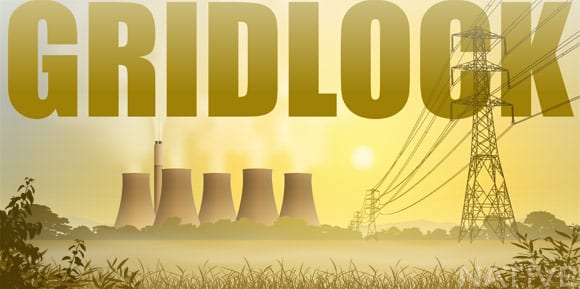A major component of our energy woes today is gridlock — and the grid itself.
Traditional coal-fired power plants are dinosaurs, figuratively and literally. These hulking monstrosities dominate regional landscapes, with smokestacks like predatory dorsal fins, spewing refuse miles into the atmosphere. Additionally, much like the ossified remains of the prehistoric creatures they burn, coal power may be facing extinction.
Nonetheless, as Americans we’re okay with these archaic monstrosities because, let’s face it, that iPod isn’t going to charge itself. Plus, we’ve been doing things this way for ages, and God knows we hate change. Despite acid rain and air pollution, we rest easy knowing that these beasts are mostly out of site and out of mind – miles and miles away from any major population center.
That is precisely the problem.
Decentralized Generation
Centralized generation of electrical power is a paradigm that has outlived its usefulness. Studies indicate that 30 percent, or up to a third, of electricity generated is irretrievably lost during distribution and transmission from the plant to homes and businesses. In fact, the worst losses occur for homes and small commercial operations because they, for safety reasons, must accept a lower voltage. Decentralized generation, likely in the form of residential photovoltaic and water heating arrays combined with energy conservation measures, could save $5 trillion in capital investment, reduce power costs by 40 percent, reduce security vulnerabilities, and cut greenhouse gas emissions in half.
Advocates of the current status quo often point out that current plant technologies compensate with up to 60 percent efficiency for gas-fired plants, and a less impressive 33 percent efficiency for coal-fired plants.
The truth is carbon-fueled plants compensate for transmission inefficiency by simply building larger and larger, and burning more and more fuel – following a train of thought that was developed when trains were still a popular form of locomotion. The application of this logic in Detroit’s car industry, taking the form of ever larger engines as opposed to more efficient engines, is one of the causes of the American automotive industry’s precipitous decline.
Nonetheless, directly comparing the two is like comparing apples (dispersed solar energy) to dinosaurs (centralized fossil fuel-fired electrical generators) – it’s simply absurd. When we fully take into account the enormous inefficiencies associated with a centralized generation paradigm, the far-reaching consequences of global warming, the effects of pollution on human health, and the dangerous geopolitics of energy dependency, it should be obvious which route offers the nation a better future.
However, for the purposes of this discussion, we will largely focus on the potential opportunities offered by a distributed generation approach powered by renewables.
Gridlock
Gridlock Gridlock Gridlock Gridlock Gridlock Gridlock Gridlock Gridlock Gridlock Gridlock

































[…] produce as much juice as they consume through a combination of energy production, energy conservation, and intelligent design decisions. For example, net-zero homes typically employ solar assemblies […]
[…] Read Gridlock – Part 1 […]
“Gridlock – Part 1” Windows Blinds was a wonderful post.
If only there were a whole lot more websites similar to this excellent one on the the
net. Anyhow, thank you for ur time, Donnie
[…] it stands today, grid power, as distributed from centralized coal or gas plants, is the nation’s primary power source. Solar, […]